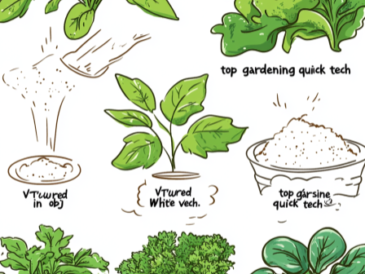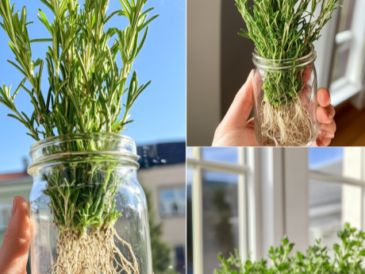Raised bed gardening is a popular method for growing vegetables, herbs, and flowers in an organized, accessible space. However, even experienced gardeners can make a few mistakes that hinder their garden’s success. Let’s dive into the most common raised bed gardening mistakes and how to avoid them to keep your plants thriving all season long! 🌻🥕
1. Choosing the Wrong Location 🏠🌞
Mistake: Placing raised beds in a shaded area where plants don’t receive adequate sunlight.
Solution: Take time to observe your yard throughout the day and locate the sunniest spot for your beds. Ideally, they should get 6-8 hours of direct sunlight. Avoid areas blocked by buildings or tall trees. Also, consider wind direction to protect your plants from excessive drying. If you’re in a windy area, try to place beds in a sheltered location.
2. Neglecting Soil Quality 🪴🌿
Mistake: Using poor-quality soil with low nutrients, which affects plant health and growth.
Solution: Create a balanced soil mix by combining equal parts garden soil, compost, and aged manure. This mix is nutrient-rich and provides proper drainage. Add organic matter like leaf mold or peat moss for improved water retention. Regularly test your soil’s pH and nutrient levels to keep it optimized for your plants.
3. Overwatering or Underwatering 💧
Mistake: Inconsistent watering practices that can stress plants and affect growth.
Solution: Install a drip irrigation system to maintain consistent moisture levels, as this delivers water directly to plant roots without oversaturation. Alternatively, a soaker hose or hand-watering can work well. Check soil moisture frequently by sticking your finger into the top inch of soil and water only when it feels dry.
4. Ignoring Crop Rotation 🔄
Mistake: Planting the same crops in the same bed each season can lead to nutrient depletion and pest problems.
Solution: Implement a crop rotation plan to avoid planting the same types of crops in the same beds every year. Rotate crops from different plant families, like tomatoes, peppers, and eggplants, to prevent soil-borne diseases and keep nutrient levels balanced.
5. Overcrowding Plants 🌱🌱
Mistake: Planting too many crops too close together, which can lead to competition for nutrients, poor air circulation, and increased disease risk.
Solution: Follow spacing guidelines on seed packets or plant tags. Allowing adequate space ensures better airflow, nutrient absorption, and healthier plant growth.
6. Using Improper Planting Depth 🌱⚖️
Mistake: Planting seeds or seedlings at the wrong depth can delay germination or cause poor root establishment.
Solution: Follow depth guidelines on seed packets or plant tags. Generally, small seeds should be planted shallowly, while larger seeds can go deeper. For transplants, dig a hole deep enough for the root ball, covering it with soil up to the original soil line.
7. Forgetting About Weeds 🚫🌾
Mistake: Ignoring weeds in raised beds, which compete with plants for nutrients and water.
Solution: Regularly inspect and remove weeds by hand or with a weeding tool. To minimize weed growth, apply a layer of mulch (like straw or wood chips) around plants. Mulching not only prevents weeds but also helps retain soil moisture.
8. Failing to Monitor Pests and Diseases 🐛
Mistake: Ignoring early signs of pest infestations or diseases, which can spread and harm your plants.
Solution: Regularly examine plants for signs of pests (chewed leaves, discoloration) or disease symptoms. Use integrated pest management (IPM), such as handpicking pests, using organic sprays like neem oil, or encouraging beneficial insects. Remove any diseased plant parts promptly and avoid overhead watering to prevent fungal infections.
9. Not Adding Organic Matter Regularly 🍂
Mistake: Failing to replenish organic matter, which depletes over time, causing a decline in soil quality.
Solution: Before each planting season, mix compost, aged manure, or decomposed kitchen scraps into the top inches of soil to enrich it with essential nutrients and improve its structure. This also helps sustain beneficial soil microbes essential for healthy plant growth.
10. Neglecting Seasonal Adjustments ❄️🌞
Mistake: Not adjusting gardening practices based on seasonal changes, which can stress plants and impact yields.
Solution: Adapt your care routine based on the season. During hot months, increase watering and add shade for sensitive plants. In colder seasons, use row covers or cloches to protect plants from frost. Choose season-appropriate crops and plan your planting calendar to maximize productivity.
Conclusion: Set Your Raised Bed Garden Up for Success! 🌟
Avoiding these common mistakes can transform your raised bed gardening experience. By choosing the right location, maintaining healthy soil, and providing consistent care, your garden will thrive, yielding fresh, delicious produce.
Ready to level up your gardening skills? Share this article, try these tips, and watch your raised bed garden flourish! 🌻




